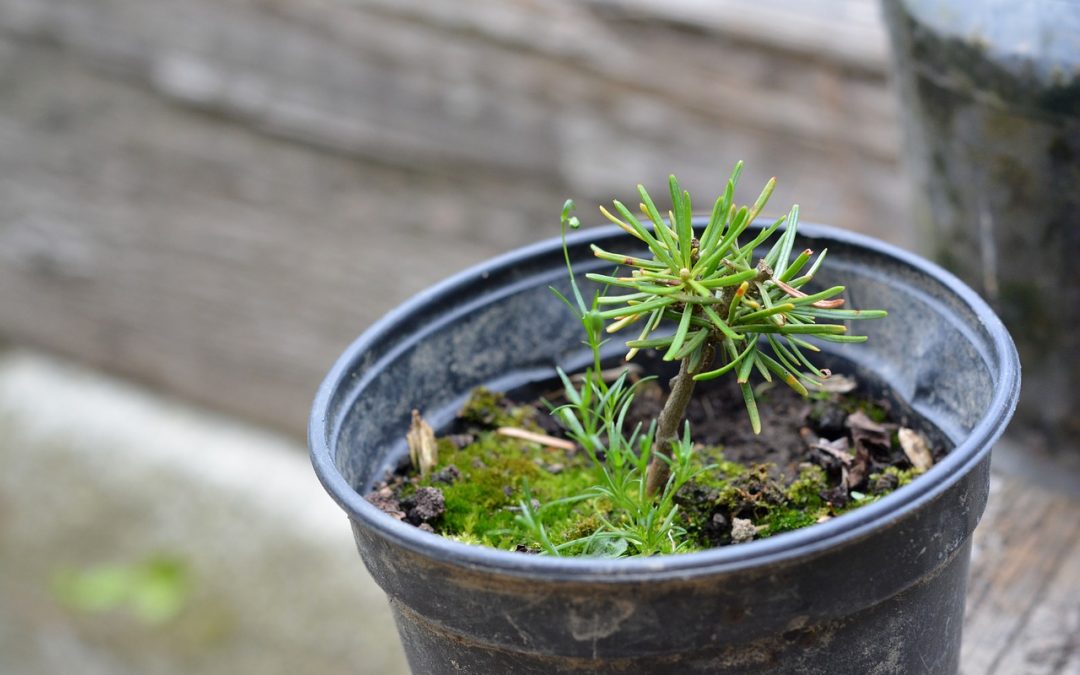Fall is a great time to plant trees!
In the Pacific Northwest, fall may be the best time to plant trees. They have time to develop roots before it gets cold.
They also benefit from developing yet more roots in spring — before they have to start using some of their energy to grow leaves. All those roots will help get them ready for our long dry summers (but they’ll still need watering).
Although deciduous trees may appear to be dormant, the roots are still growing and require water. Some say it’s best to water a newly planted tree regularly for the first three years, but it is definitely necessary for the first 12 months.
Before buying – check for signs of a healthy tree
Be careful when you buy your tree in the fall. The danger is that the tree may have been stressed all summer at the nursery, and may not have enough resilience to thrive. However, some nurseries receive stock in the fall as it is an increasingly popular time to plant.
Before planting
1). Check the root ball for roots growing in a circle, rather than extending out. Circling roots can eventually become ‘girdling roots’ that can harm or kill a tree. Roots can start to circle if they’re grown in a container. When they reach the edge of the container, they may start to follow the inner wall, rather than continue to reach outwards.
Snip off any main section of root that is growing around, rather than out and away.
‘Balled and burlapped’ trees may have been started in a container, so it’s also important to check them for circling roots before planting. Lift the tree by the root ball, not by the trunk.
Completely remove any plastic burlap on ‘B&B’ trees. Natural fibre burlap can be planted if it is pulled back from the top one-third of the root ball. Remove string or twine.
2). Learn how tall and wide the type of tree is likely to grow, and make sure you plant it in a spot where it will have room to achieve full height and size without running into things – for instance, power lines overhead, or sidewalks too close by that could be broken by growing roots.
3). Look for the root flare or root collar, where the trunk naturally widens out at the bottom of the tree. This should not be covered with earth, even if it came from the nursery that way. Do not plant the tree deeper than it was planted.
Digging the hole
The hole should be about three times the width of the container or root ball.
Keep in mind a tree’s roots don’t usually grow deep, but they do grow out to the sides in every direction. (Most tree roots are contained in the top 1.5 to 2 feet of earth. But they can grow at least as wide as the tree is tall, or three times the width of the crown.)
Some experts say to fertilize, while others say it can harm a tree. It may be safest to instead add mulch after you’ve planted the tree. This will slowly add nutrients to the soil as it decomposes.
When you’ve finished planting the tree, add 3 to 4 inches of leaf or bark mulch in the tree’s drip zone. It will help protect the roots from freezing in the winter. Replenish when it has decomposed.
However, keep mulch away from the trunk. The bottom of the trunk (called the root collar, or root flare – where the trunk begins to widen out) should not be covered with soil or mulch.
Give your tree some love – Studies have shown that plants respond to words and attention… So you can lovingly reassure the tree you are going to take good care of it, thank it for its beauty and the services it provides (such as storing carbon, releasing oxygen, cooling and cleaning the air, filtering water, etc.) and pray for its strength and health.
Water the tree well, once every 7 to 10 days during dry weather, more often in hot weather. Plan to water weekly throughout the first year, including fall and winter, unless the ground is frozen or there is sufficient rain.
Enjoy watching your beautiful new tree grow!
